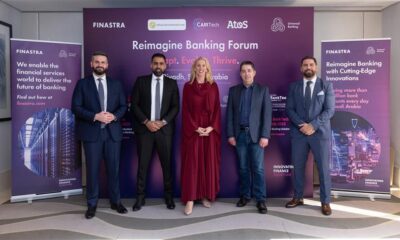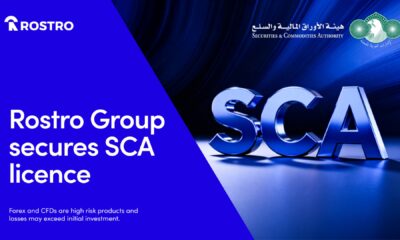Tech News
Official Mobility Live Technology partner Keyloop, launches innovative Automotive Retail Platform in Middle East

Keyloop has launched Fusion, a new end-to-end Automotive Retail Platform (ARP) that will help motor retailers across the Middle East manage and optimise the full vehicle sales and aftersales process – from initial enquiry through to ownership and retention. The new platform will be showcased at Mobility Live Middle East (24 – 25 June 2025; Dubai World Trade Centre), where Keyloop is the event’s official Technology Partner.
Fusion incorporates four distinct ‘domains’ – Demand, Supply, Ownership and Operate – covering all key functions within a dealership business. Keyloop’s Drive Dealer Management System (DMS) is now a critical element in the Operate domain. All of Fusion’s domains draw upon information held in the system’s Active Data Core, which provides users in all departments with a single comprehensive record of customer interactions and transactions. This is in line with their commitment to a way of working that prioritises outcomes: making efficiency, automation, and an AI-driven future a core part of their strategy.
As it is cloud-based and powered by AWS, Fusion tools and functionality can be deployed rapidly and securely for organisations of all sizes, even major dealer groups operating in multiple countries and with distributed networks of sites representing a diverse portfolio of vehicle brands. Fusion uses ‘Experience-First’ technology that puts the customer at the heart of all activity, helping retailers deliver positive customer outcomes and amplify revenues through the full purchase and ownership cycle. It also streamlines and automates key processes to reduce operational costs, making businesses more agile. Keyloop pulls from over 9,000 OEM integrations to help facilitate a connected user and customer journey.
Motor retailers can select those elements of the new Fusion ARP that best suit their requirements or introduce the full platform across their entire business. The areas of focus for Fusion’s key domains are as follows:
- Demand: Helps retailers and OEMs maximise deal profitability through the use of convenient communication and ecommerce tools, omnichannel-enabled sales operation software and intelligent retention initiatives. It reduces cost per acquisition, increases lead-to-sale conversion rates, and improves customer loyalty.
- Supply: Allows retailers, OEMs and fleet suppliers to achieve maximum profit per unit by proactively managing vehicle supply through intelligent management of inventory and asset risk.
- Ownership: An aftersales-focused suite of resource and workshop management tools that increase efficiency and customer satisfaction. Enables retailers and OEMs to maximise workshop utilisation and income per visit.
- Operate: With the Drive advanced dealer management systems (DMS) at its core, Operate helps retailers and OEMs achieve peak operational efficiency, supporting faster, more informed business decisions.
Visitors to Mobility Live Middle East will hear Tom Kilroy, Chief Executive Officer and Dean Gardner, Chief Customer Officer deliver a keynote speech focusing on how to create the latest digital retailing ecosystem. While Monzer Tohme, Managing Director Sales MEA, will chair a panel session with industry experts, discussing how connecting data leads to the delivery of better customer experiences. Keyloop will also have its own 48 square-metre stand where delegates will be able to see our connected Fusion technology in action and speak to our team on the day.
Commenting on the launch of Fusion, Monzer Tohme said: “Middle East is a critical growth region for Keyloop, and with Fusion we have a unique opportunity to unlock more value to the dealer network in the region. The four domains in our new connected ARP enable our retailer customers to benefit from the expertise of our team and the extensive reach of our technology. Our focus remains on simplifying the vehicle sales and ownership journey, staying true to our Experience-First principles. Fusion is more than just a technological solution – it’s a transformative approach to reshaping our industry and delivering meaningful value to all stakeholders.”
Tohme added: “Today’s evolving automotive ecosystem demands a more flexible, scalable, and integrated approach. Fusion is a clear and compelling proposition, guaranteed to drive value for our customers. It underpins a connected, data-driven approach which fosters customer trust, revenue growth and long-term loyalty.”
Tech News
ATERMES and IEC secure Landmark Contract to Deploy AI-Powered Bird Repelling System at Lahore Airport
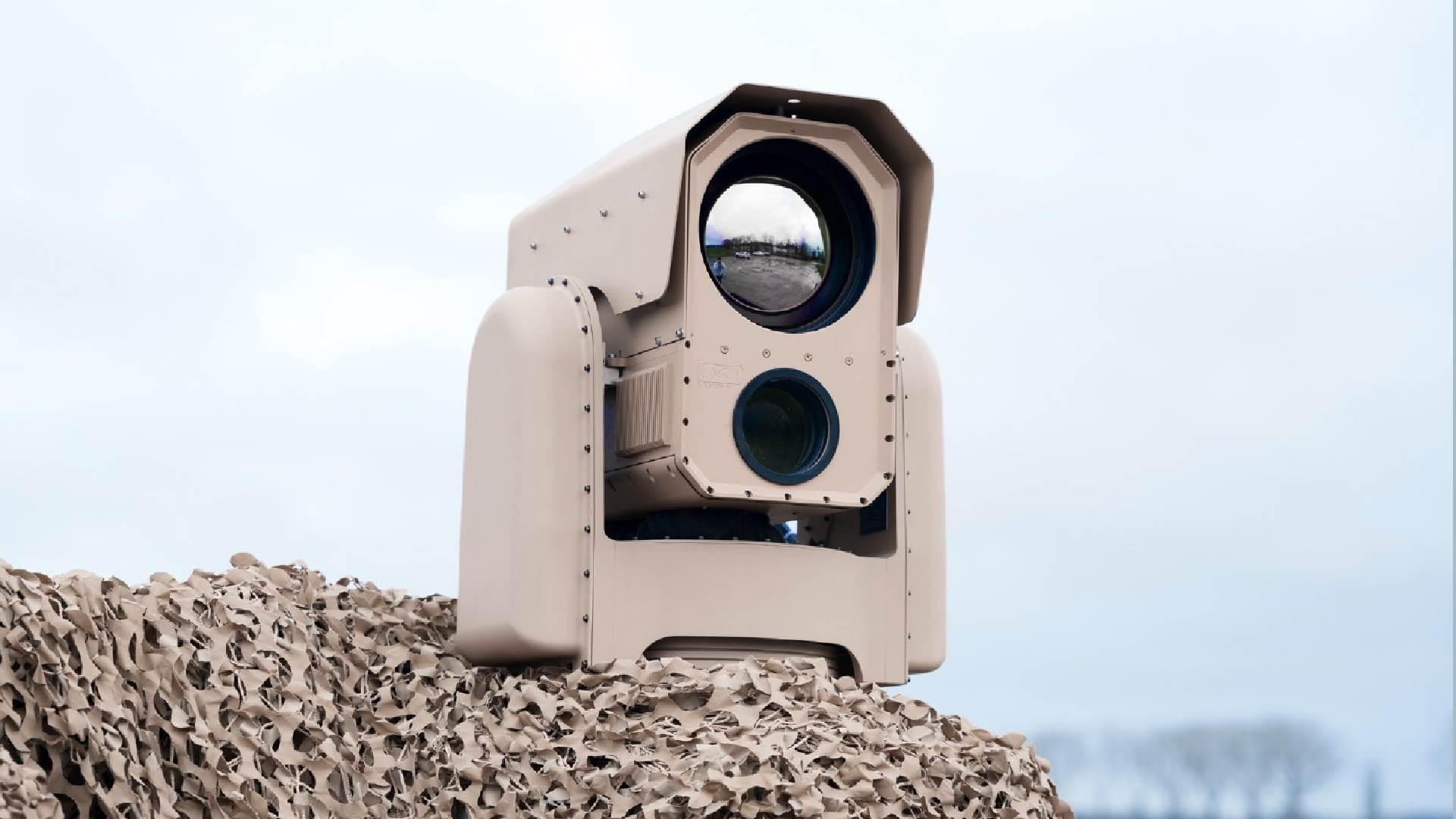
ATERMES, a French leader in advanced surveillance and security solutions, announces in partnership with The Imperial Electric Company (IEC), the award of a major contract by the Pakistan Airports Authority (PAA) for the deployment of a state-of-the-art Bird Repelling System (BRS) at Lahore International Airport.
This milestone project represents a first-of-its-kind integrated solution combining SURICATE, ATERMES’ advanced AI-enabled multi-sensor surveillance system, with acoustic and laser deterrence technologies. The system delivers a fully automated, intelligent, and environmentally friendly approach to mitigating bird-strike risks; one of aviation’s most persistent safety challenges.
The SURICATE system, developed by ATERMES in France, brings together cutting-edge optronics, embedded AI, and edge computing to continuously monitor airfields, identify potential avian threats in real time, and automatically activate deterrence mechanisms.
Once a bird threat is detected by the system’s deep-learning algorithms, SURICATE autonomously triggers the surrounding acoustic and laser repellers, driving the birds away from critical flight zones such as runways and taxiways.
This unique synergy between AI-based detection and automated multi-modal deterrence marks a turning point in airport security and environmental protection. Unlike traditional manual or time-based repelling systems, the BRS for Lahore Airport operates only when necessary, optimizing energy use and minimizing disturbance to the surrounding ecosystem.
Lionel Thomas, Chairman of ATERMES, stated: “This project is not just about technology; it’s about redefining how airports ensure safety through intelligence. By merging AI, optics, and deterrence, we’re transforming bird control into a predictive, autonomous, and eco-responsible process.”
Sajid Jamal, Executive Director of The Imperial Electric Company, added: “Our partnership with ATERMES reflects Pakistan’s growing commitment to embracing advanced, AI-driven safety systems. Lahore will become the first airport in the region equipped with such an integrated and intelligent Bird Repelling System.”
The project underscores a strong collaboration between France and Pakistan in technological innovation. ATERMES will provide the detection and control systems, while IEC, a key player in Pakistan’s engineering and infrastructure sectors, will oversee integration, installation, and local support. Together, they will ensure the delivery of a robust, scalable, and sustainable system that sets a benchmark for other international airports in the region.
Tech News
Ramco Systems Celebrates 20 Years in the Middle East, Unveils Vision for the Future at Milestone Event
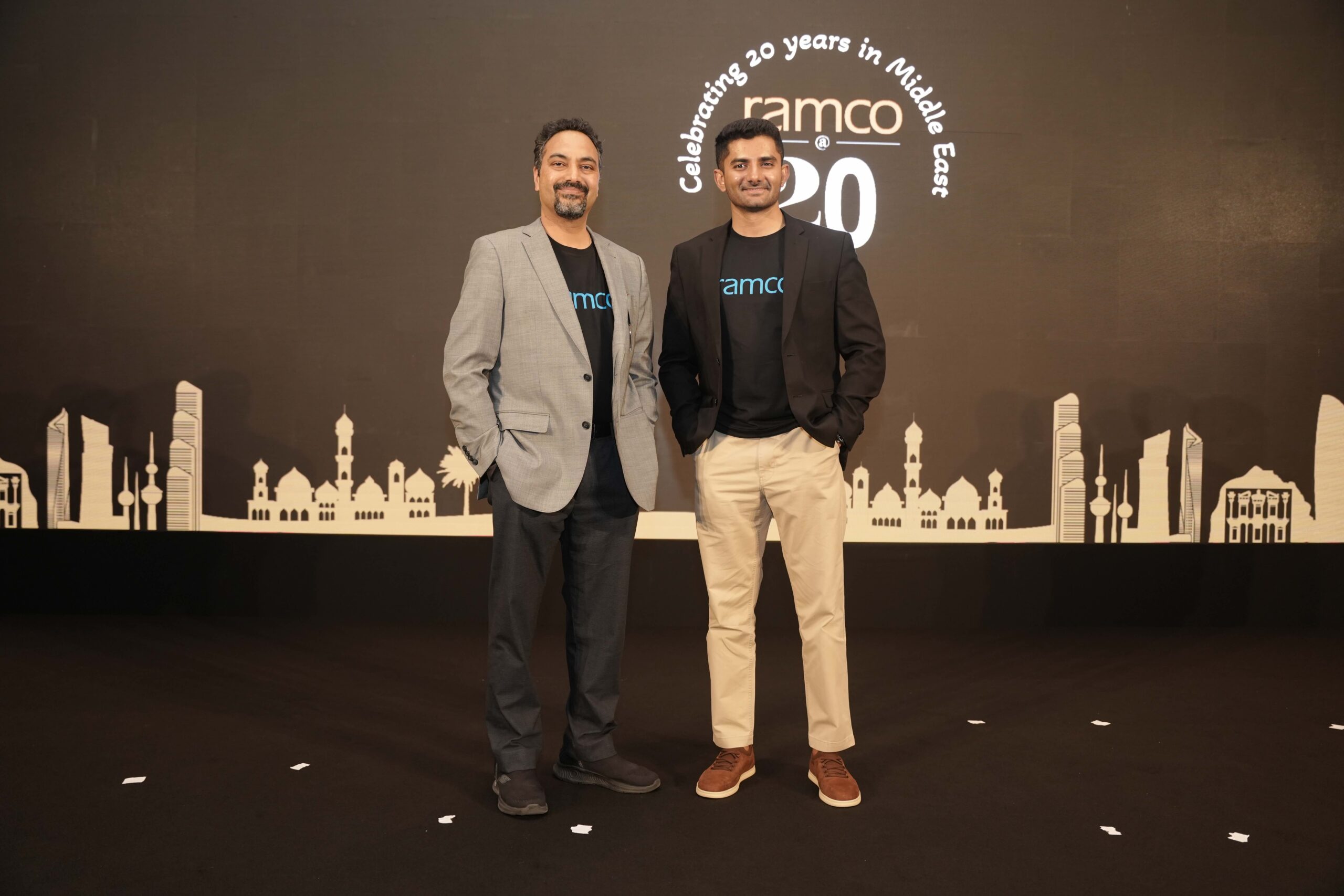
Doubles down on AI-native applications and localized innovation to shape enterprise technology in the region
Ramco Systems, aglobal enterprise software company offering next-generation SaaS-enabled platforms and products, celebrated two decades of powering enterprise transformation in the Middle East. To mark this milestone, Ramco hosted Ramco@20 – Experience That Matters, a full-day event in Dubai designed to showcase its regional journey, highlight cutting-edge innovations, and bring customers and industry leaders together for forward-looking discussions.
The first half of Ramco@20 convened senior HR and payroll leaders from across the region for a thought leadership forum on the future of employee experience. Industry leaders discussed how enterprises in the Middle East are moving beyond traditional HR process optimization toward more intelligent, intuitive, and employee-centric models of workforce management. Conversations explored balancing automation with empathy, using AI thoughtfully, and elevating payroll as a trust-building touchpoint.
The second half welcomed a large gathering of customers across business units – Global Payroll, Aviation MRO, ERP, Services Resource Planning and Logistics – along with partners, and industry influencers, for a celebration honouring the relationships that have defined Ramco’s two-decade journey. Ramco’s leadership unveiled its technology vision: shifting from Systems of Record to Systems of Intelligence through AI-native applications, agentic workflows, and conversational UX. The leadership’s address also emphasized its investments in platform modernization and localized initiatives, while outlining a roadmap to further strengthen Ramco’s focus for the next 20 years.
Abinav Raja, Managing Director, Ramco Systems, said, “The Middle East has been a cornerstone of Ramco’s growth story for two decades and has shaped our thinking in profound ways. The region’s appetite for transformation has inspired us to design solutions that combine global best practices with local relevance. This milestone is built on the trust and partnership of our customers, and our commitment is clear: double down on AI-native, API-first applications that incorporate special features aligned with the region, platform modernization, and customer-centricity. We are shaping the future of enterprise technology with solutions enabling businesses to focus on what truly matters: growth and people.”
Sandesh Bilagi, Chief Operating Officer, Ramco Systems, said, “Our presence in the Middle East has been built on strong partnerships and a commitment to delivering outcomes. This region is not merely a market for us, but also a proving ground for ideas that redefine global enterprise technology. The presence of all our business units in this region makes the Middle East a key pillar and reflects the confidence our customers have placed in us for twenty years.“
“Our investments in agentic AI, conversational UX, and platform innovation are designed to deliver enterprise applications that are intuitive, secure, scalable and integrate regional nuances,” Bilagi added. “We also focus on customer-focused initiatives like local deployment and training because every digital journey is, at its core, a human journey. The region is setting global benchmarks, and we are proud partners of the next era of enterprise innovation.”
Over the past two decades, Ramco has partnered with leading enterprises across the region, enabling digital transformation through innovative solutions. Its work in the Middle East has been shaped by sectors and functions that demand precision at scale – payroll, aviation, manufacturing, conglomerates, trading, infrastructure, professional services and logistics – giving Ramco an execution depth that continues to define its competitiveness in the region.
Tech News
Vertiv and Caterpillar announce Energy Optimization Collaboration to Expand End-to-End Power and Cooling Offerings for AI Data Centers
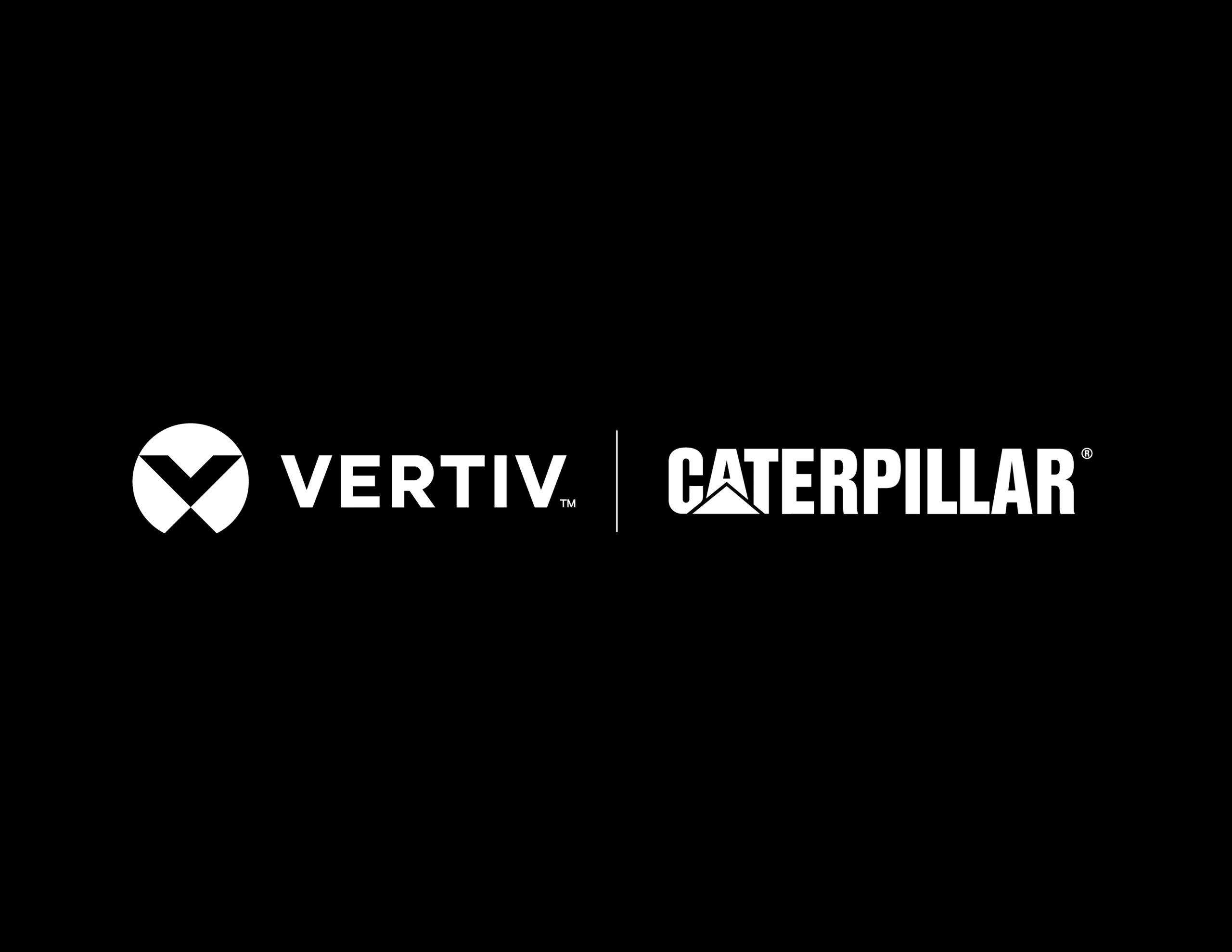
Vertiv, a global leader in critical digital infrastructure, and Caterpillar Inc. (NYSE: CAT), a global leader in power systems, today announced the signing of a strategic undertaking to collaborate on advanced energy optimization solutions for data centers. This initiative will integrate Vertiv’s power distribution and cooling portfolio with Caterpillar’s, and its subsidiary Solar Turbines’, product and expertise in power generation and CCHP (Combined Cooling, Heat and Power) to deliver pre-designed architectures that simplify deployment, accelerate time-to-power and optimize performance for data center operations.
A Powerful Collaboration:
This collaboration directly addresses the growing demand for on-site energy solutions that deliver reliable power and cooling. Together, the companies are able to offer a fully integrated solution with validated interfaces and performance, enabling customers to accelerate design, installation and deployment.
- Caterpillar and Solar Turbines will supply power generation solutions, such as natural gas turbines and reciprocating engines, to deliver dependable, scalable electric power and thermal energy for CCHP.
- Vertiv will provide a complete portfolio of power and cooling solutions and services, packaged as modular, pre-designed blocks, to shorten design cycles and standardize deployment.
The Customer Advantages:
- Accelerates Time-to-Power – by utilizing predesigned, modular reference architectures to speed up deployment time.
- Lowers PUE (Power Usage Effectiveness) – enables improved energy efficiency and carbon footprint because the system is optimized end-to-end: power, cooling, distribution and dynamic load management, compared to traditional design.
- Global lifecycle support – the offering is backed by the trusted, global service and support networks of both Vertiv and Caterpillar.
“This collaboration with Caterpillar and Solar Turbines is a cornerstone of our Bring Your Own Power & Cooling (BYOP&C) strategy and aligns seamlessly with our grid-to-chip framework by offering resilient, on-site power generation solutions. This is optimal for customers looking to reduce or eliminate grid dependence,” said Gio Albertazzi, CEO, at Vertiv. “By combining our complementary technologies, portfolios and expertise, we are enabling coordinated integration. Our pre-engineered, interoperability-tested building blocks let customers execute design, build and deploy concurrently, with predictable system performance.”
“As AI-driven workloads continue to accelerate, the demand for robust and scalable power infrastructure and cooling is becoming increasingly critical,” said Jason Kaiser, group president of Caterpillar Power & Energy. “Our collaboration with Vertiv will enable us to deliver integrated, on-site energy solutions that lower PUE and meet customers’ evolving needs.”
This initiative directly addresses the growing demand for on-site energy solutions and offers a coordinated, customer-first approach to solution design and implementation. The Vertiv and Caterpillar Memorandum of Understanding (MOU) represents a pivotal step in further refining this ecosystem, enabling customers to overcome energy constraints and deploy optimized AI centers.
-

 Tech News1 year ago
Tech News1 year agoDenodo Bolsters Executive Team by Hiring Christophe Culine as its Chief Revenue Officer
-

 VAR8 months ago
VAR8 months agoMicrosoft Launches New Surface Copilot+ PCs for Business
-

 Tech Interviews2 years ago
Tech Interviews2 years agoNavigating the Cybersecurity Landscape in Hybrid Work Environments
-

 Tech News5 months ago
Tech News5 months agoNothing Launches flagship Nothing Phone (3) and Headphone (1) in theme with the Iconic Museum of the Future in Dubai
-

 Tech News2 years ago
Tech News2 years agoBrighton College Abu Dhabi and Brighton College Al Ain Donate 954 IT Devices in Support of ‘Donate Your Own Device’ Campaign
-

 Editorial1 year ago
Editorial1 year agoCelebrating UAE National Day: A Legacy of Leadership and Technological Innovation
-

 VAR1 year ago
VAR1 year agoSamsung Galaxy Z Fold6 vs Google Pixel 9 Pro Fold: Clash Of The Folding Phenoms
-

 Cover Story9 months ago
Cover Story9 months agoUnifonic Leading the Future of AI-Driven Customer Engagement








